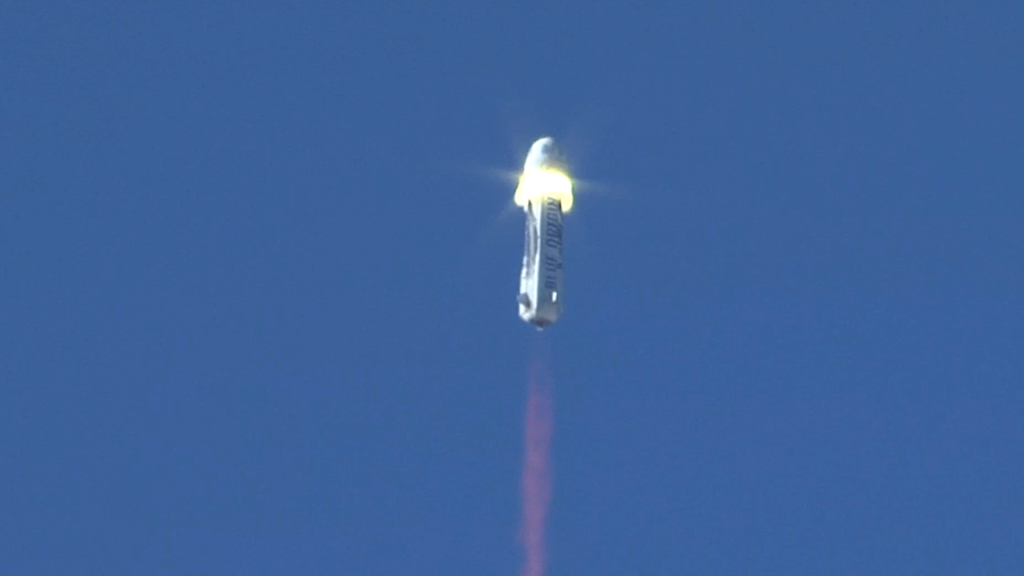Blue Origin’s New Shepard Survives Fifth Flight, Destined for Museum
[Via Satellite 10-06-2016] Blue Origin completed the fifth flight of the same New Shepard suborbital launch vehicle Oct. 5, recovering the booster after an in-flight escape test of the crew capsule that was expected to very likely destroy the rocket. During the mission, Blue Origin intentionally triggered the crew escape system at maximum dynamic pressure through transonic velocities — the most stressing condition during the mission.
Blue Origin said in a blog post prior to the mission that the test would “probably destroy the booster,” because it was never designed to survive an in-flight escape. The test caused the capsule escape motor to slam the booster with 70,000 pounds of high-heat off-axis force, which was expected to be fate-sealing, though the company said simulations did show some chance of a recovery and landing.
“If the booster does manage to survive this flight — its fifth — we will in fact reward it for its service with a retirement party and put it in a museum,” Blue Origin wrote Sept. 8.
Blue Origin created a new escape system that saves the escape motor so it can be reused. During the test, the capsule survived after separating at 4,893 meters (16,053 feet) and reaching an apogee of 7,092 meters (23,269 feet). After the capsule escape, the booster continued its ascent, reaching an apogee of 93,713 meters (307,458 feet) before executing a controlled, vertical landing back at Blue Origin’s West Texas launch site. Blue Origin said this is the final mission for the booster.
